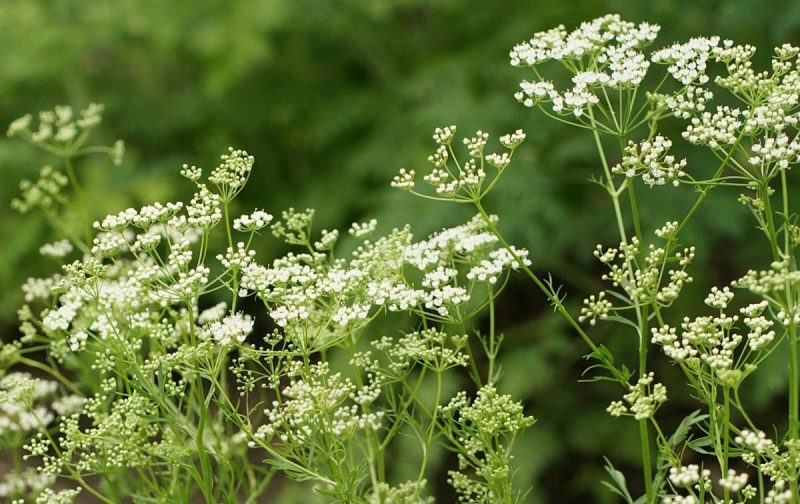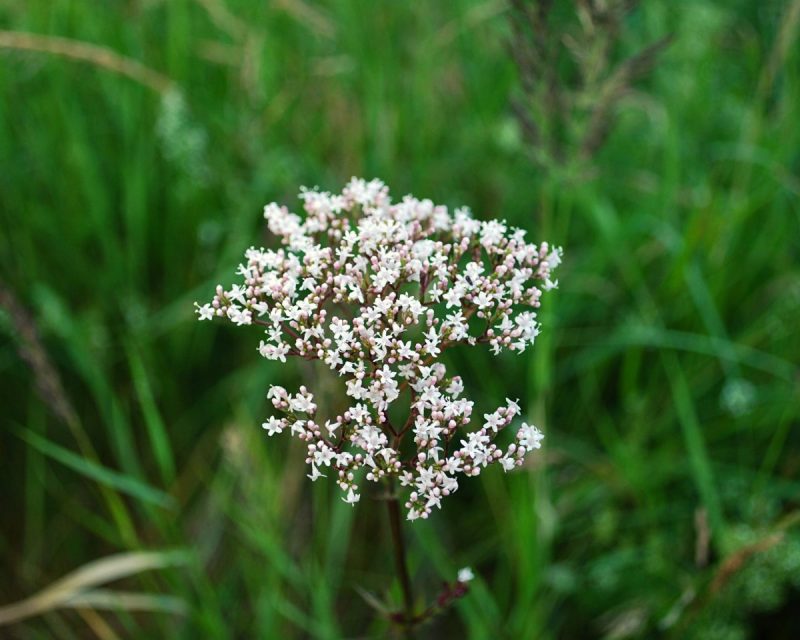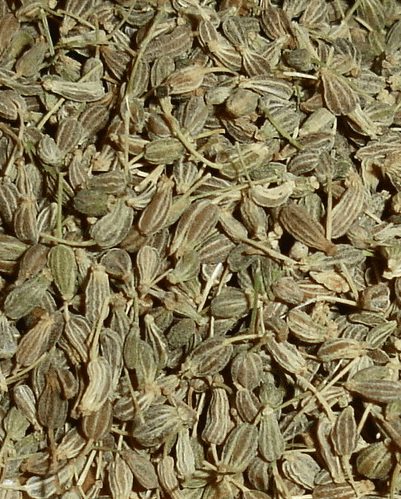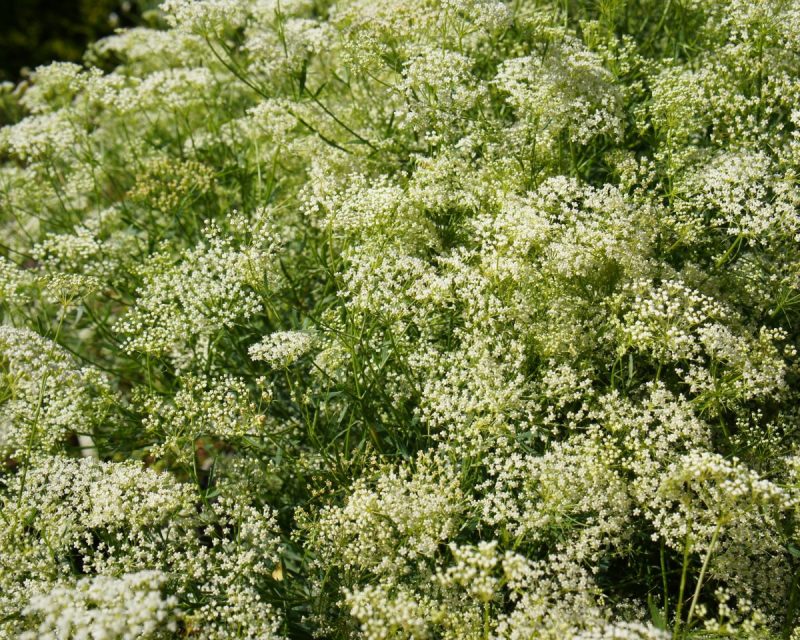Aniseed – planting, growing, and harvesting

Aniseed (Pimpinella anisum) is native to the Mediterranean area and South Asia, and it is cultivated for the specific aroma of volatile oil, rich in anethole. The aniseed, scientifically named Pimpinella anisum, is often confused with the star anise (Illicium verum), a shrub native to Vietnam that produces star-shaped fruit.
Use
From aniseed, the fruit and volatile oil are used in the food and cosmetics industry, as well as for the treatment of respiratory diseases. Whole or crushed seeds are added to pastries, to flavor drinks or to make tea. The leaves can be used in gastronomy, in seasoning salads, meat, and vegetable dishes. The characteristic aroma of anise is given by the anethole content of the volatile oil.
Botanical characteristics
Aniseed is an annual herbaceous plant belonging to the Umbelliferae family. The plants develop a straight stem, branched towards the topside, which can reach up to 60 cm in height, with ovate basal leaves and the upper ones pinnate – with lobes with large incisions, with linear-lanceolate leaflets.
The flowers are white, clustered in umbels, and form compound diachene fruits, with small, gray-green seeds.



Environmental requirements
This species has high-temperature requirements, preferring 20-21℃ for optimal germination, but the plants grow even at lower values, 4-5℃. Particular caution must be paid to maintaining constant soil moisture during germination. It is recommended to cultivate it in sunny places, with well-drained soil and neutral pH. The soil should be cleaned of weeds, as anise grows quite slow in the first part of the vegetative growth period.
Cultivation
It can be grown both in the garden, along with other herbs, as well as as a potted plant. Thoroughly prepare the soil in spring, as soon as you can enter the field, or in autumn so that germination is uniform. Also, constant humidity in the soil has to be ensured during germination. Fertilizers can also be applied with the tillage. The crop is established by direct sowing, early spring or late autumn, in rows 30-45 cm apart and 25-30 cm between plants per row.
Recommended products
-
You can find products on a different store
Change Store -
You can find products on a different store
Change Store -
You can find products on a different store
Change Store -
You can find products on a different store
Change Store -
You can find products on a different store
Change Store -
You can find products on a different store
Change Store -
You can find products on a different store
Change Store -
You can find products on a different store
Change Store -
You can find products on a different store
Change Store -
You can find products on a different store
Change Store -
You can find products on a different store
Change Store -
You can find products on a different store
Change Store -
You can find products on a different store
Change Store -
You can find products on a different store
Change Store -
You can find products on a different store
Change Store -
You can find products on a different store
Change Store -
You can find products on a different store
Change Store -
You can find products on a different store
Change Store -
You can find products on a different store
Change Store -
You can find products on a different store
Change Store -
You can find products on a different store
Change Store -
You can find products on a different store
Change Store -
You can find products on a different store
Change Store -
You can find products on a different store
Change Store
Care
Aniseed plants have slow growth in the first part of the vegetative growth period and for this reason, the soil has to be cleaned of weeds. During dry periods it is recommended to irrigate the plants. Tutors can be used to support the plants and prevent them from falling to the ground because of their height.
In the case of plants grown in flowerpots or in the garden, to ensure their nutrient requirements, a specially formulated fertilizer can be administered regularly.
Recommended products
-
You can find products on a different store
Change Store -
You can find products on a different store
Change Store -
You can find products on a different store
Change Store -
You can find products on a different store
Change Store -
You can find products on a different store
Change Store -
You can find products on a different store
Change Store -
You can find products on a different store
Change Store -
You can find products on a different store
Change Store -
You can find products on a different store
Change Store -
You can find products on a different store
Change Store -
You can find products on a different store
Change Store -
You can find products on a different store
Change Store -
You can find products on a different store
Change Store -
You can find products on a different store
Change Store -
You can find products on a different store
Change Store -
You can find products on a different store
Change Store -
You can find products on a different store
Change Store -
You can find products on a different store
Change Store -
You can find products on a different store
Change Store -
You can find products on a different store
Change Store -
You can find products on a different store
Change Store -
You can find products on a different store
Change Store -
You can find products on a different store
Change Store -
You can find products on a different store
Change Store
Harvesting and storage
For seed consumption, when the fruits are gray-green, the plants must be cut and dried in rooms with low humidity, in order to harvest the seeds later.
If it is desired to use the seeds for the subsequent setting up of the crop, their harvesting should be done at full maturity.
Diseases and pests
Anise plants are rarely attacked by diseases or pests. Symptoms of powdery mildew, downy mildew, Cercospora leaf spot disease, or rust may occur, as well as some pests such as striped bugs or aphids.















































































































































































































































































































































































































































